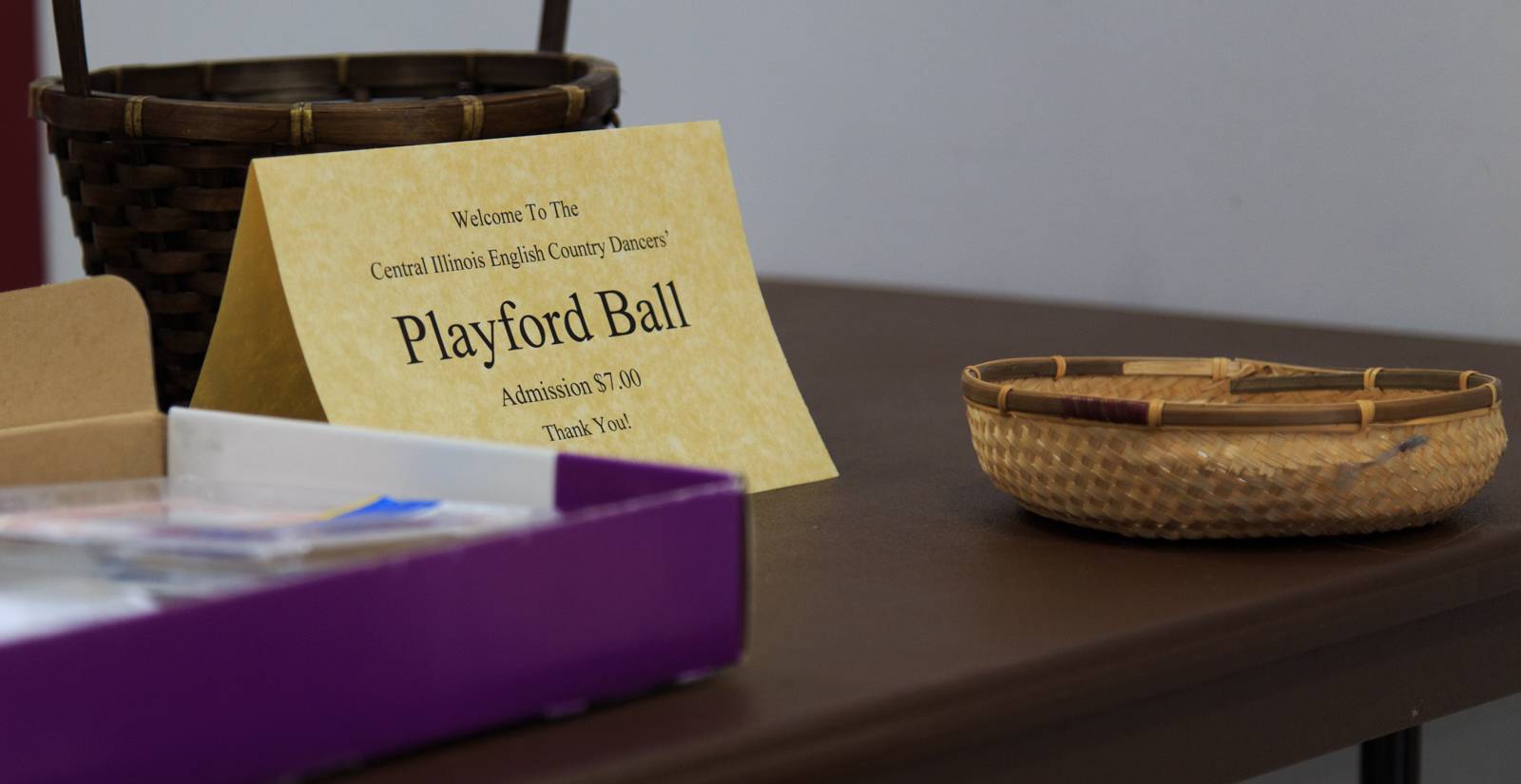On Saturday, June 15th, the Central Illinois English Country Dancers (CEICD) convened at the Phillips Recreation Center in Urbana to hold their 20th annual Playford Ball, which is one of their two major balls held during the year (the other being held near Christmas). The evening started at 7 p.m. with about 25 dancers and a four-member band, The Flatland Consort. As the night went on more people joined and brought the number of participants closer to 40 before the festivities concluded shortly after 10 p.m. and the dancers treated themselves to a potluck dessert. Quite a few people wore period dress for the event to build up the atmosphere, however there were plenty of people in casual dress and even regular street clothes as well. Most importantly, everyone who danced had a ball! See what I did there?
Below, getting ready for the dances of night.
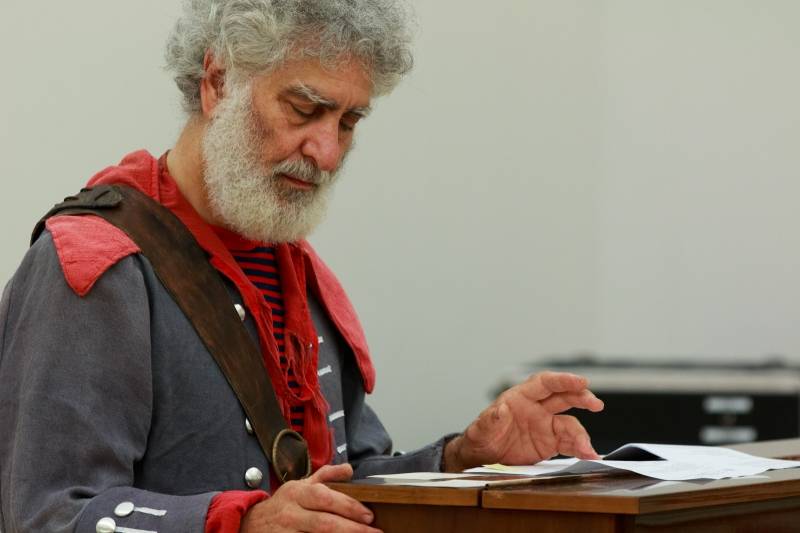
So first things first: What exactly IS English country dancing? Jonathan Sivier, one of the event’s organizers, was happy to fill in the details. “These are dances from England that were performed in the 1600’s and 1700’s,” Sivier explained. “If you’ve seen any of the recent Jane Austen movies, then you’ve seen examples of English country dancing.”
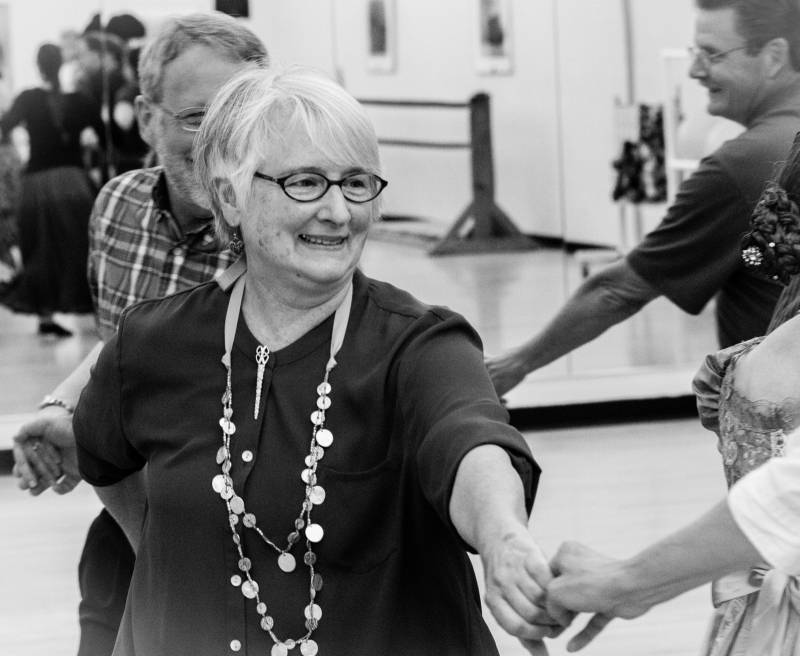
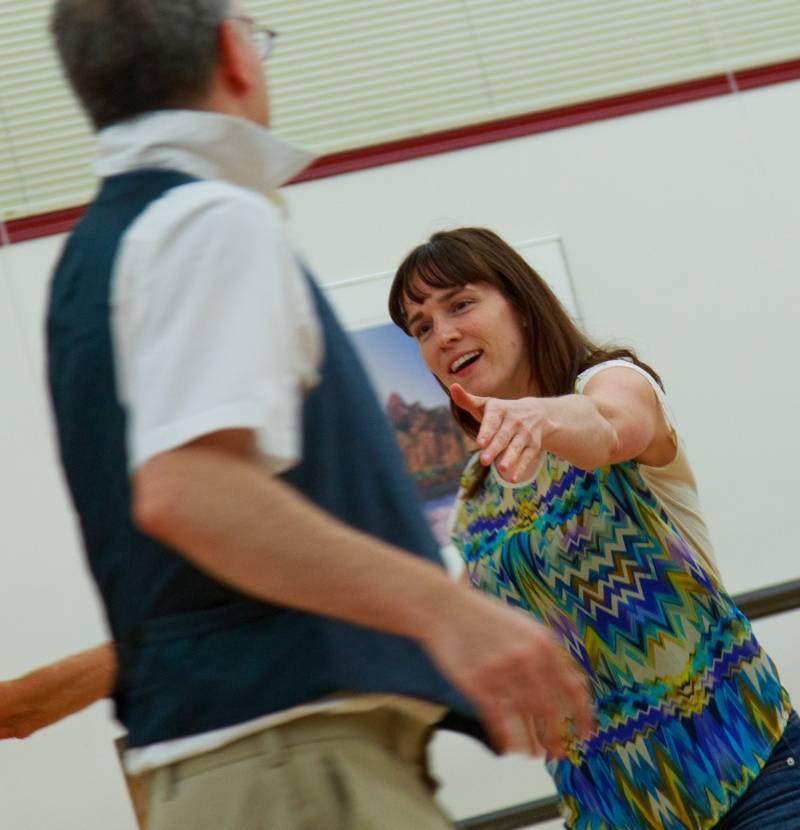
As I watched throughout the night I saw that many of the steps of the dances seemed very familiar, like groups forming stars with their hands and turning in a circle or doing something akin to a do-si-do, and Sivier was happy to make the connection for me. “Modern contra and square dancing evolved from English country dancing, starting to differentiate during the American Colonial and Revolutionary War eras. Since they can look very similar, once of the main ways to tell the difference is the music,” he continued. “English country dancing is performed to classical music, while contra and square dancing is accompanied by string or bluegrass-like music. Many people actually start off learning contra, then decide to take up English after that.”
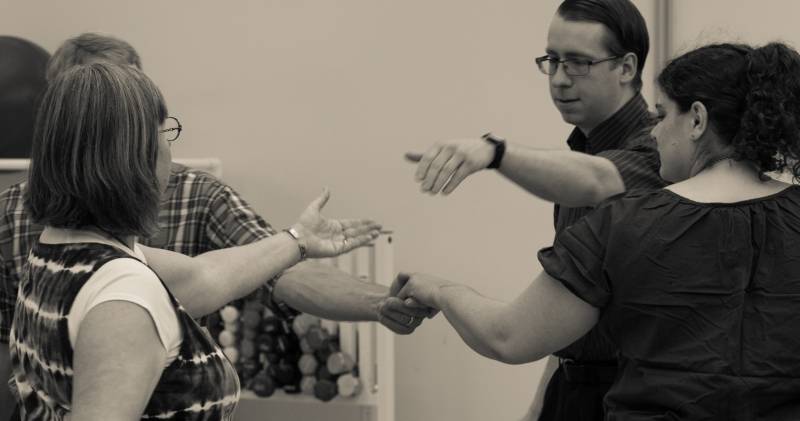
Below, The Flatland Consort plays music for the night. The band has even been hired to play dances at the governor’s mansion!
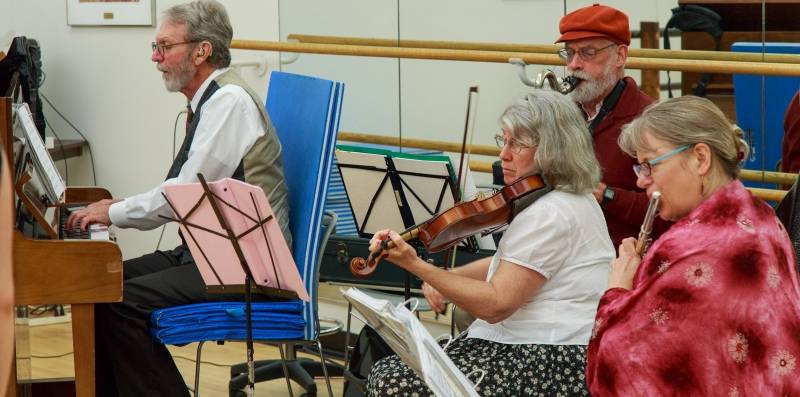
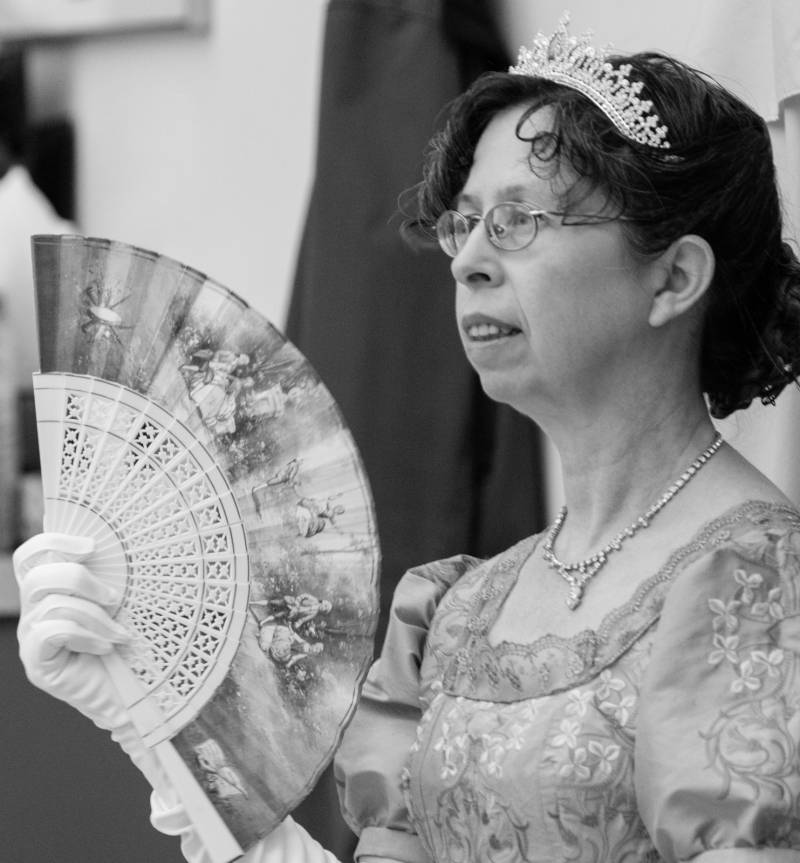
The CEICD actually holds a dance each month, usually attended by 20-30 people. The Playford Ball, which was tonight’s dance and a larger “main event” dance for the group in the spring, is actually a common term for a special event in English country dancing. It’s named after John Playford, who published The English Dancing Master in 1651. This was especially important because, for the first time ever, the instructions for both the dance steps and the music were contained all published in the same book together.
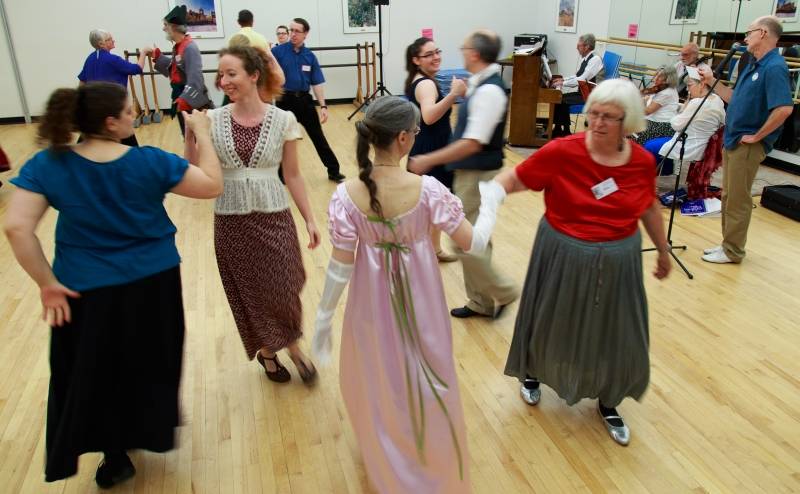
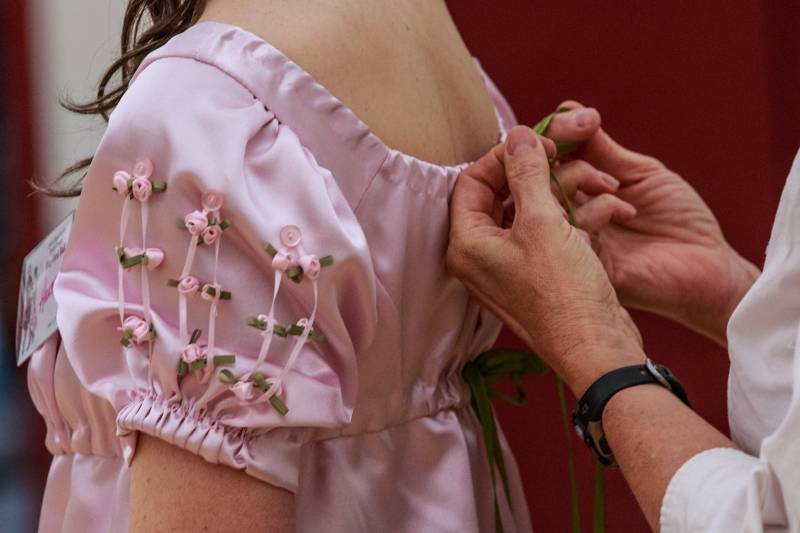
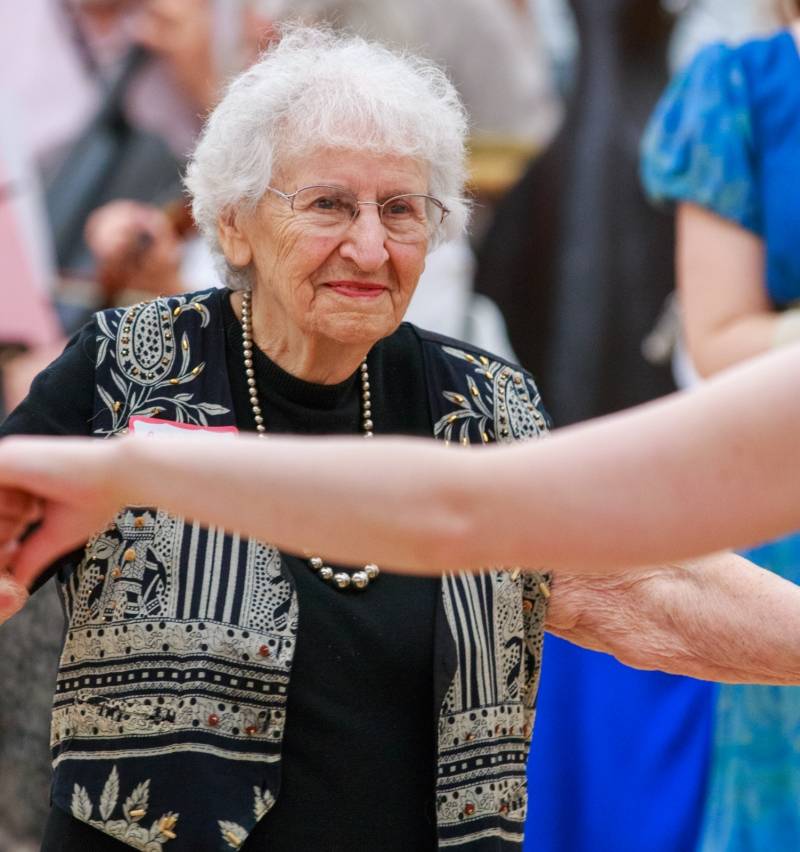
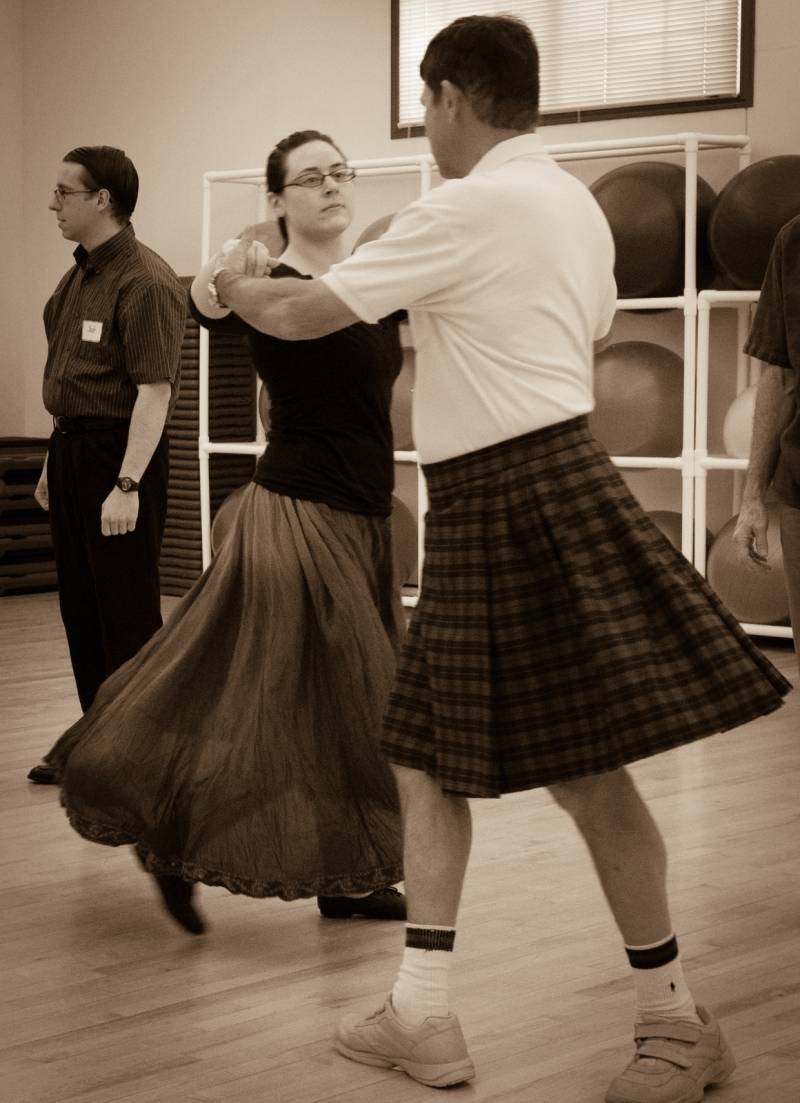
Dancers were able to participate in about a dozen or so dances throughout the night, starting with some relatively simple and straightforward routines and later progressing through some fancier steps after the sun set. If you’re worried at all that it might be too hard to take part without formal lessons first, you couldn’t be more wrong! “Dance patterns are made up of small building blocks or figures that build upon each other,” said Sivier. “While practice will help you get better, anyone can walk in off the street and join in- no experience or dance partner necessary!”
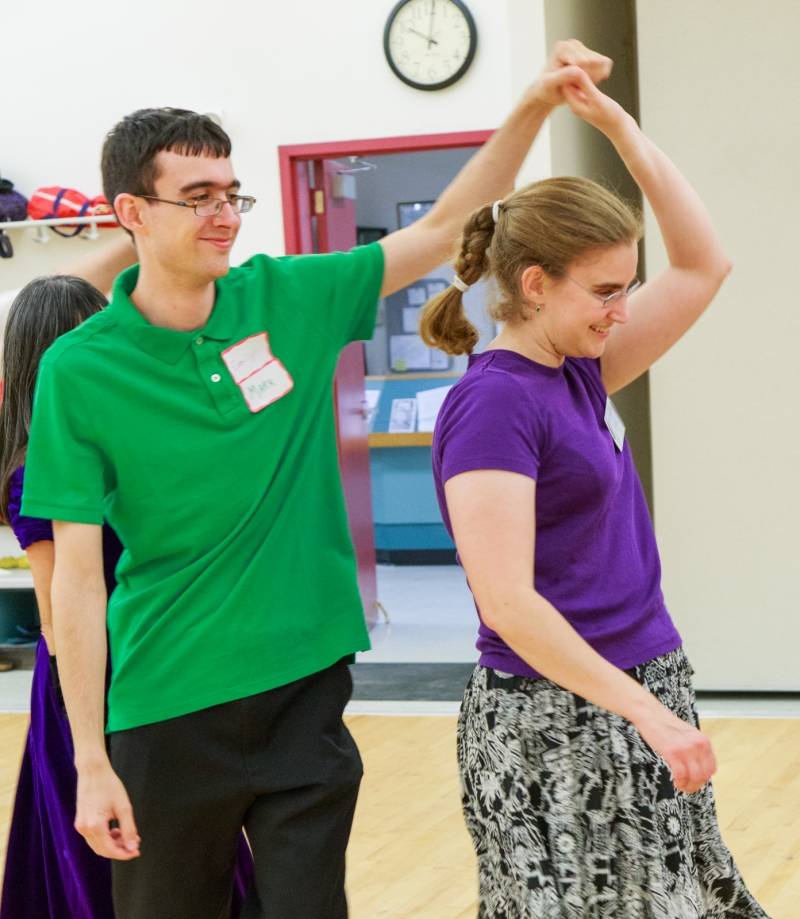
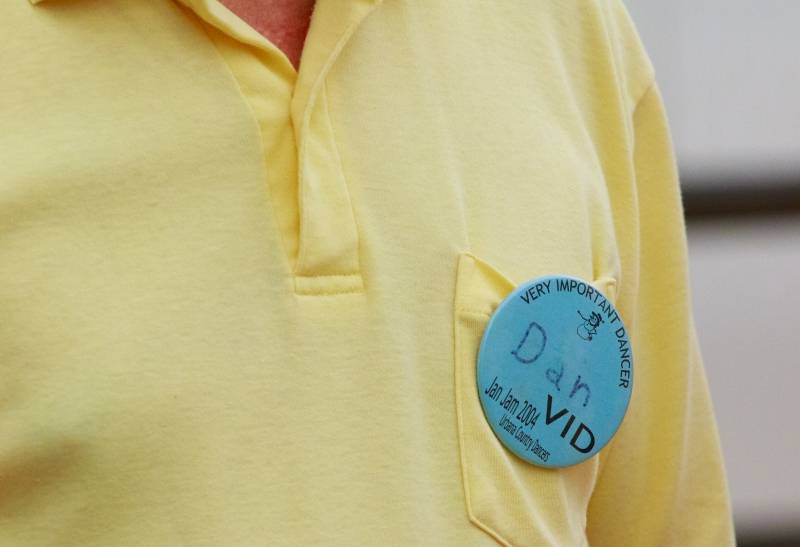
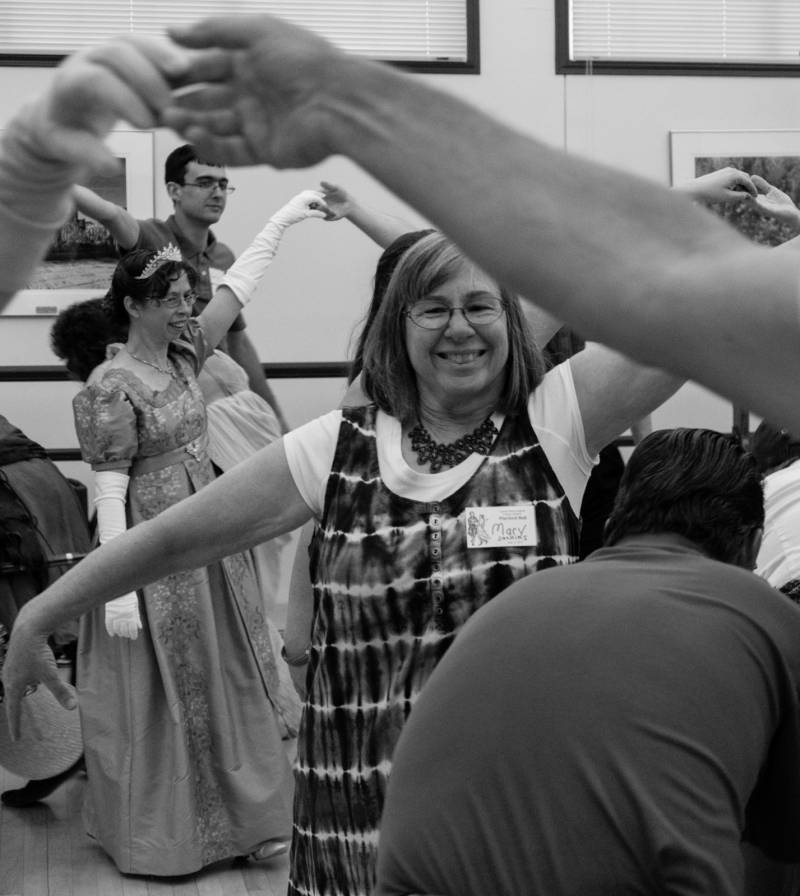
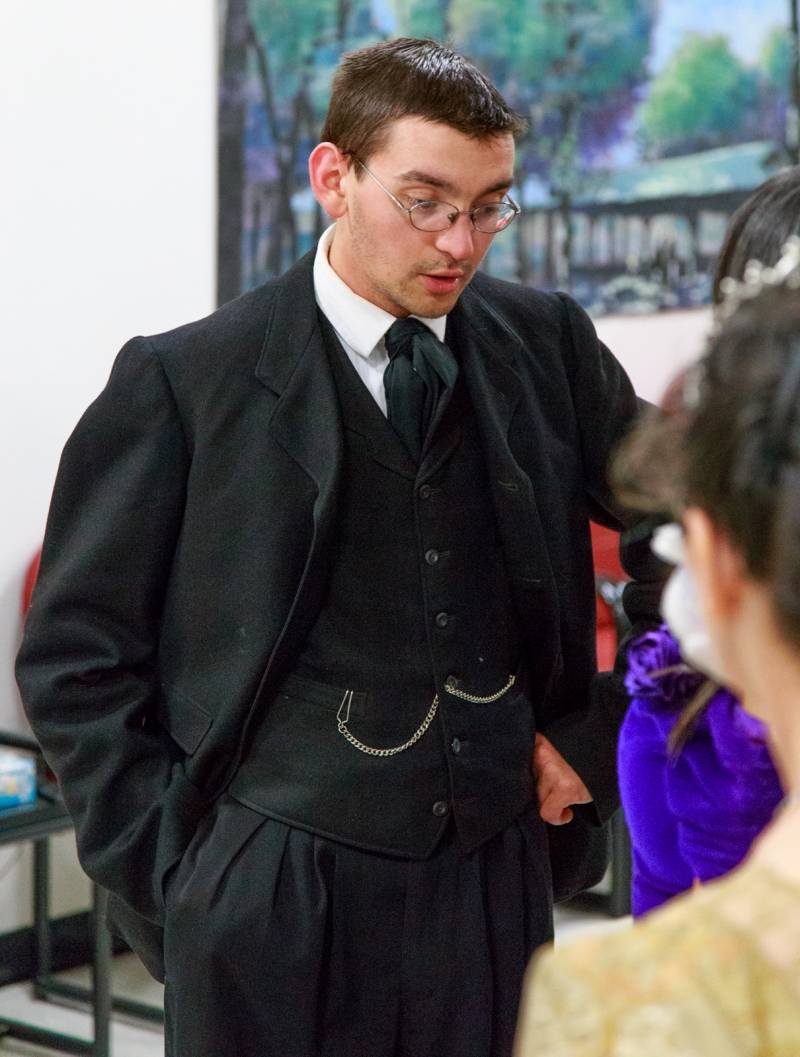
Below, intermission and snacks to keep your energy up!
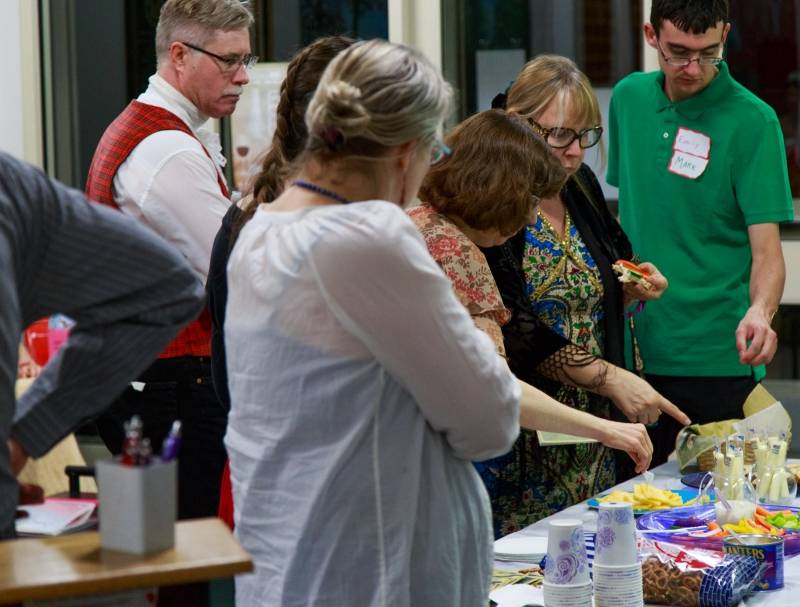
I was able to find the truth of this first hand when everyone came back from a brief intermission. I was invited to put my cameras down and join in, and I was led through two dances by two very sure-footed, gentle, and patient women. What Sivier said was absolutely true: I didn’t need to know a thing about the dance because the first thing that happened was a walk-through. The band played a brief set of chords so we could hear the rhythm of the dance, and then the person who called the dance gave step-by-step instructions to allow everyone a chance to get familiar with their roles and steps.
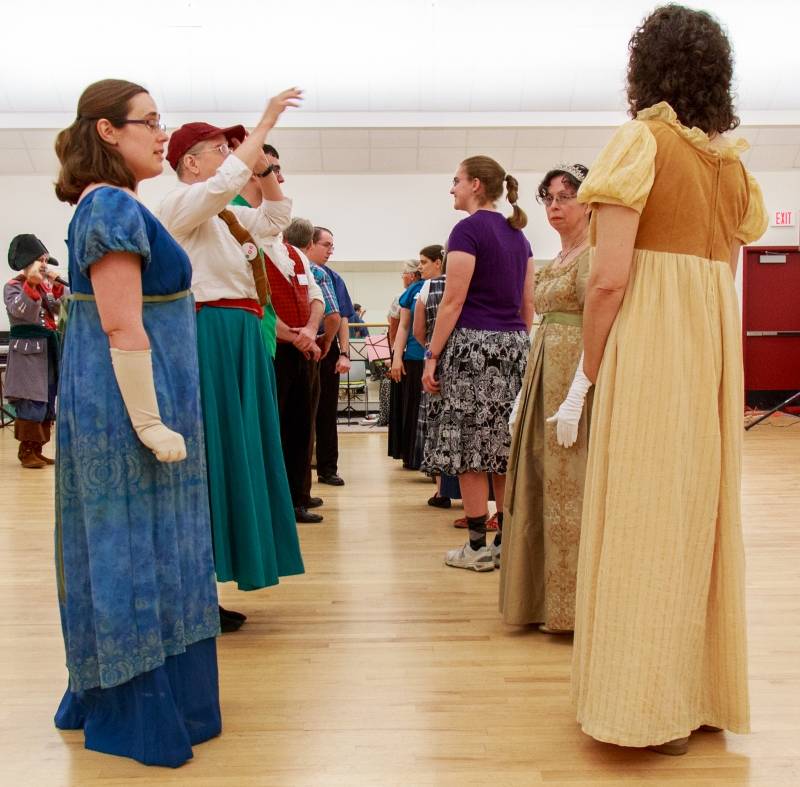
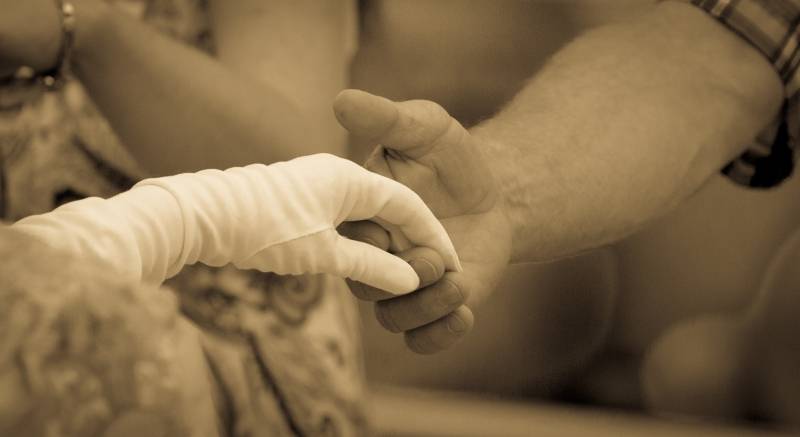
Below, Sivier calls a dance.
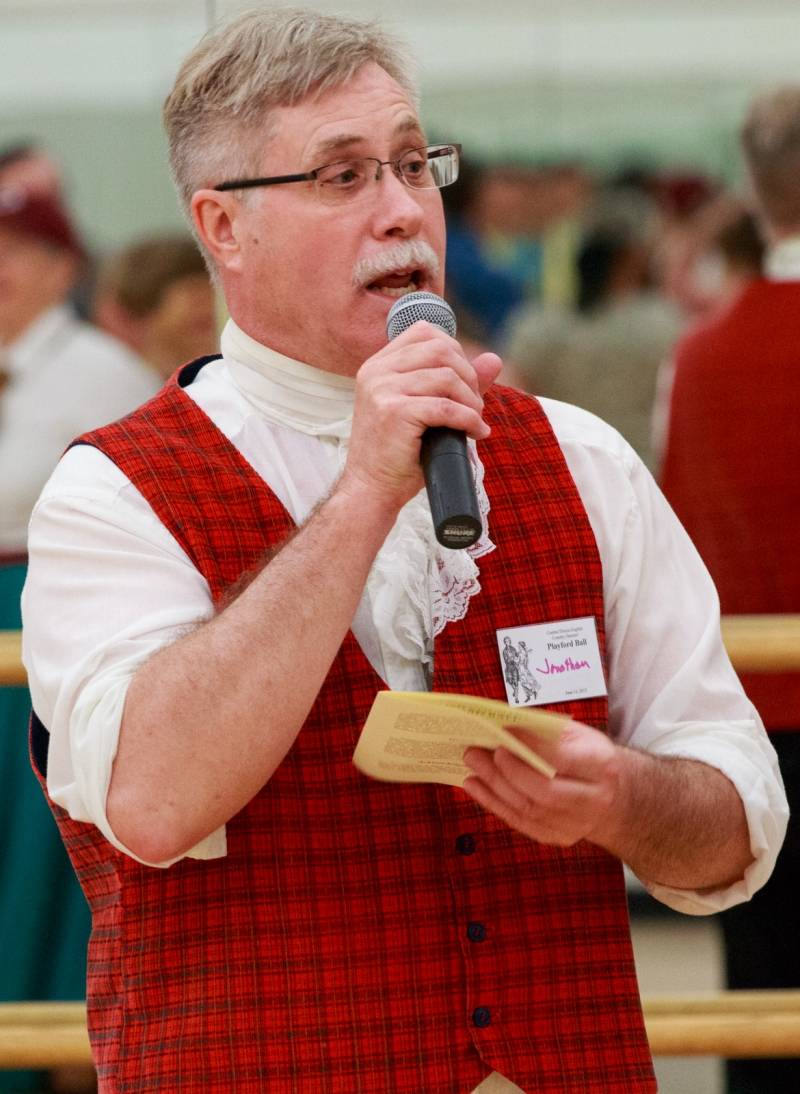
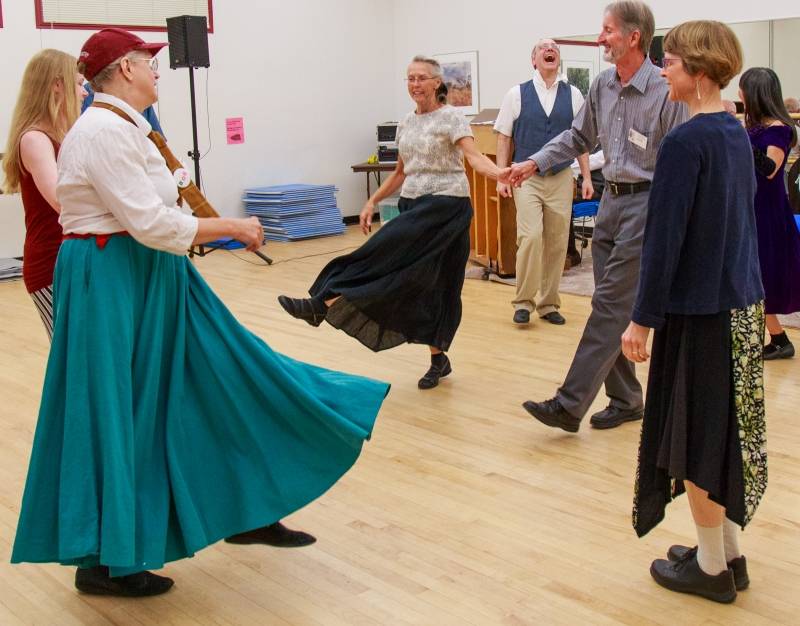
We lined up in our original positions, the music started for real, and we were off to dancing! I made my fair share of mistakes, however everyone around me was very forgiving and encouraging- even when I turned the wrong way for the dozenth time (I promise I eventually got it mostly right). It was a lot more fun than I thought it would be, and I can’t think of a better environment for anyone that is interested in learning but worried about not knowing what to do. The only thing I would do differently next time is to dress a bit fancier to enhance the experience!
Below, there’s more than one way to lead!
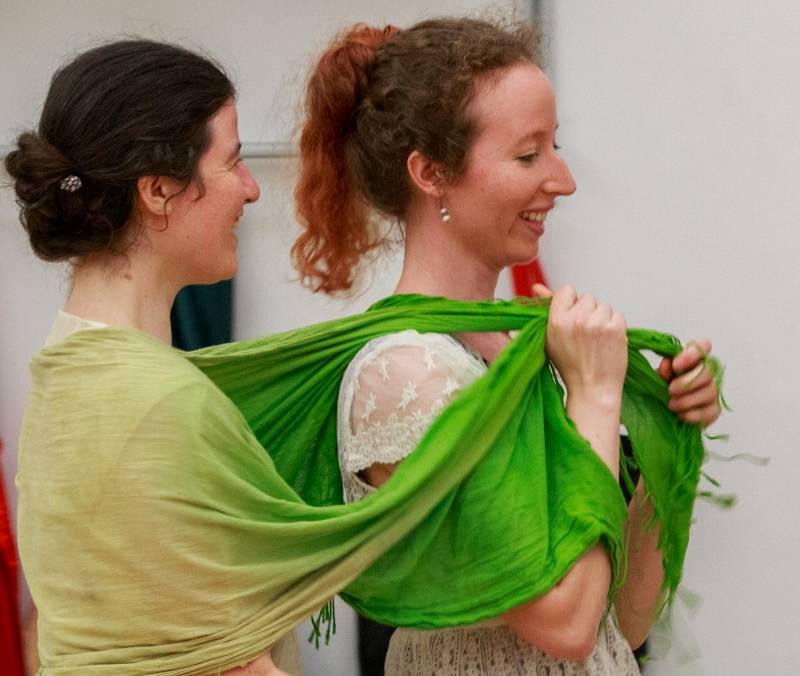
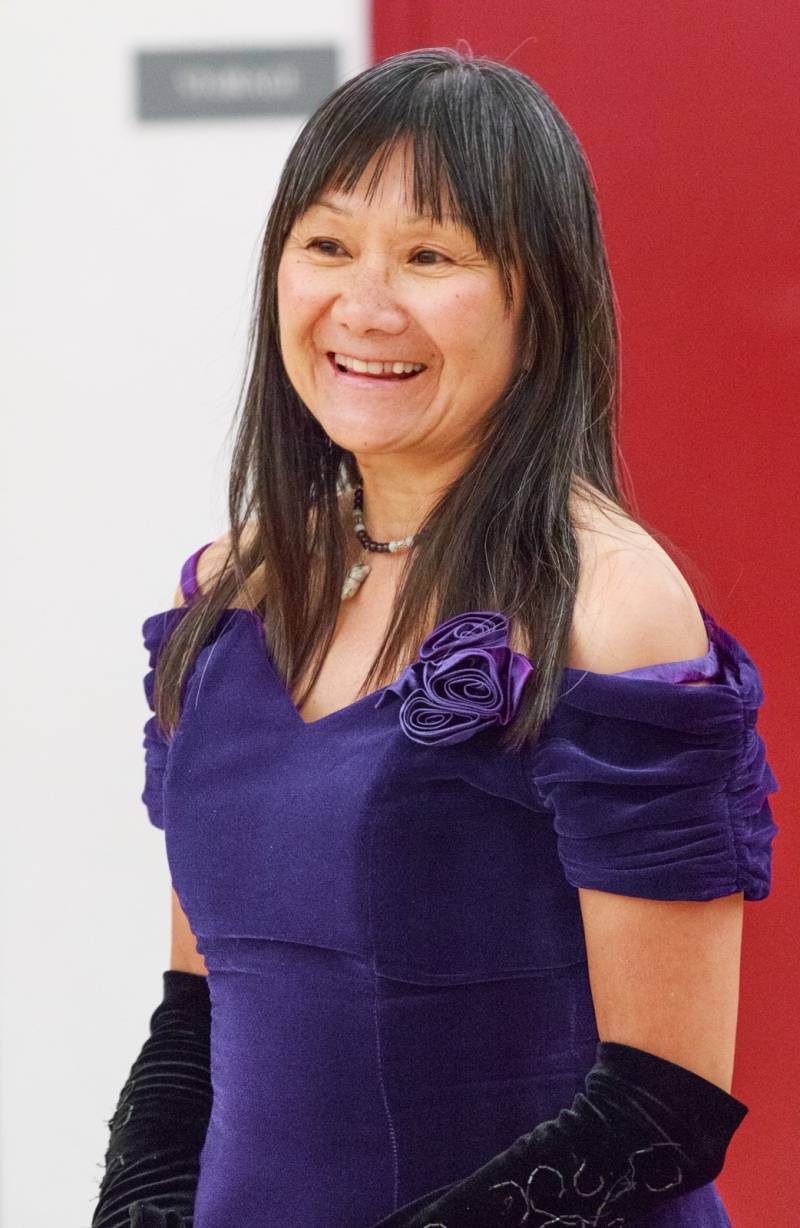
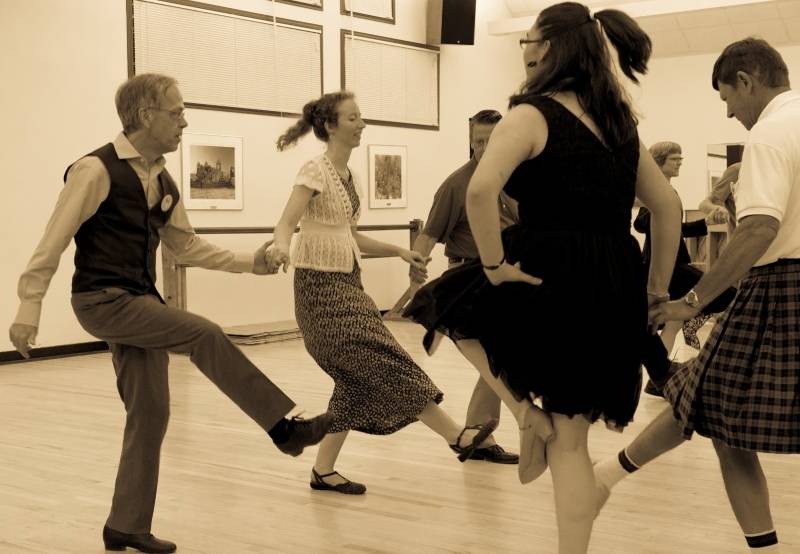
If you’re interested in learning more about the Central Illinois English Country Dancers, you can visit their website for more information. You can also check out their upcoming schedule here. The next dance will be Sunday, July 26th, at the Botanical Gardens at the Museum of the Grand Prairie in Mahomet, and there will be a potluck picnic in the park after the dance. The CIECD group asks for a small donation (usually $3) for the dances to cover the use of the facility. As always, finery and fans are encouraged but not required; the important part is enjoying a wonderful evening of dancing!








